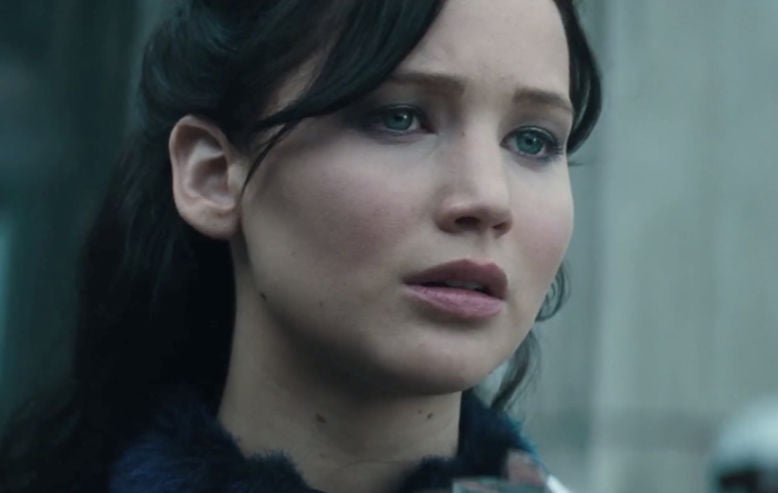It’s an accepted truth: sequels just aren’t as good as the original movie.
Look at the Lethal Weapon or Die Hard franchises. Have any of the sequels held the power of the original films? How about The Hangover trilogy? The Shrek films? The year of the Matrix? Ghostbusters vs. Ghostbusters II? Practically every horror franchise ever?
We all know what happens. A movie is successful, and Hollywood rushes another one out to capitalize on its success. The creators, now given a larger budget and creative freedom, get big heads and go overboard. Or there’s nothing new or interesting to add, but they’re lured back in by the big money that can be made.
The result? We’re left feeling lukewarm about the whole thing. Our love for the original movie may even be diminished because of its association with a subpar continuation.
But this doesn’t always have to be the case. Sometimes, sequels more or less equal their predecessors in quality. Godfather and Godfather II, for example. And then there are the true gems. Second (and, once in a great while, third) films that are actually better than the original movie.
These are films that take the groundwork that was created in the first movie and expand upon it in smart, exciting ways. Characters are deeper, the world is bigger… below I’m going to talk about a few of those stories.
The Road Warrior (Mad Max 2)
As many people saw this past summer with Fury Road, there’s a lot of mileage left in the Mad Max gas tank. George Miller has created such a fascinating world that, at this point, it doesn’t even really need its titular character to tell great stories. The first movie doesn’t really feel that way though.
Sure, there’s the overarching post-apocalyptic idea that an oil shortage has plunged the world into chaos. But mostly, this is an updated Western. Civilization still exists, and Max is basically a sheriff sent over the edge on a revenge mission when his family is killed. A biker gang does it, but they feel like a barely-heightened version of biker gangs that we’ve seen in countless movies before.
Everything about it feels small. And that works in the film, but doesn’t really give you a sense of the world.
In contrast, Road Warrior feels epic right from the beginning. Max is a hardened nomad who wanders a barren landscape, viciously fighting for survival. He’s an anti-hero who has to be dragged into saving a peaceful encampment from marauders.
But it’s the visuals that really tell the story of this world. Everyone is dirty and dust-strewn. They wear pieced-together scraps of leather clothing. Vehicles are Frankensteined monsters built for battle. It’s no longer a Western, but a kill-or-be-killed feudal society where the strong demand fealty from the weak. And the battles are a ballet of speeding destruction. We needed Mad Max to get to this point, but Road Warrior is where the legend really begins.
Catching Fire
Book adaptations are tough. The creators try hard to stay true to the source material and distill it down to its essence, but they tend to feel a bit by-the-numbers – lifeless.
The first two Harry Potter movies suffered quite a bit from this. The original Hunger Games is far better than either of those movies, but something about it never quite comes to life. Only on rare occasions is it able to capture the desperate, raw emotion present in the novel.
Catching Fire does not suffer from this problem. Whereas the first movie has to do the heavy lifting of setting up the world and these characters, Catching Fire throws you right into the, well, fire. There’s something about it that’s more kinetic. More emotional.
It also plays a neat trick where it sets the audience up for what they expect from sequels – more of the same, just bigger and more exciting. You watched Katniss survive the Hunger Games last time? Well, she’s going back. But this time she’s competing against other former champions! While she lives this reality, though, it has a deeper game going on where even her competitors are really fighting against the Capital. Something that sets up the final two movies nicely.
The Empire Strikes Back
Do I even have to explain this one? Isn’t it universally accepted that ESB takes the relatively simple and straightforward Star Wars fable and dials it to 11?
All right, let’s do it. Those two words (“simple” and “straightforward”) pretty much give you the reason Empire is so much better. Whereas Star Wars worked hard to tell a fun tale of good vs. evil, painting everything in black and white, Empire is all about being gray.
They won at the end of Star Wars? Not so much. Vader’s the devil? Okay, but he’s also Luke’s dad and Obi-Wan was a liar… from a certain point of view. Luke’s gonna get the girl? Actually, she’s kind of way more into Han. Lando’s a dirty traitor for turning Han over to Vader? Yeah, but he’s got a city to worry about. Plus, he helps Leia and the others escape.
The success of Empire isn’t just that it’s the “dark” Star Wars movie. (Revenge of the Sith is “dark,” and I still think it’s pretty crappy, regardless of what its Tomato Score is.) Empire is great because it’s complicated. It reveals previously hidden truths and makes you see this world and these characters in a new light.
Evil Dead II and Army of Darkness
I can hear you arguing already, so let me be clear. I’m not saying that The Evil Dead isn’t good. It is. Raimi creates something truly horrific with that film, and he finds unique visual ways to suck you into the story and leave you disoriented. Plus, you know, rape tree. I challenge you to find two more disturbing words in the English language.
But Evil Dead II is practically the creation of a genre, and Army of Darkness takes it even further. By turning his iconic horror film into a horror-comedy, Raimi introduces the world to Bruce Campbell. I know, I know, he was the lead in the original movie… but was that really The Chin? Is that the same guy who laughs maniacally along with hunting trophies and furniture only to flip on a dime and calmly shoot someone as they attempt to come into the cabin? Does he have a boom stick? Or fight tiny versions of himself?
As terrifying as The Evil Dead is, at the end of the day, it’s just a straightforward horror flick. With Evil Dead II and Army of Darkness, Raimi really let his inner crazy out. And we’re all better for it.
Toy Story 2
Out of every “first” movie on this list, Toy Story may be the most well-respected. Not only is it a classic – it basically made computer-animated films a viable art form.
Who wouldn’t fall in love with the charming story of a toy who feels like he’s being replaced by something new in his child’s life? It’s such an obvious idea after you think about it, but Pixar pulls it off marvelously. And at the end, it feels like a full, finished story. Woody and Buzz become friends and realize that the most important thing is being there for Andy. Where do you go from there?
Apparently you go to a story where Woody is pondering his own mortality and legacy. Toy Story 2 starts with Woody getting damaged, and he worries about falling apart and Andy not taking good care of him. When he is mistakenly sold to a toy collector at a garage sale, his first reaction is horror. Even after the collector brings in someone to fix Woody and make him look like new, he’s skeptical. But Prospector lays his options out for him: he can go back to Andy and maybe have a few more good years… or he can come with them to the museum and be enjoyed by children for generations.
Beyond exploring the world of Toy Story in an interesting thematic way, Toy Story 2 also manages to be just as fun and clever as the original, if not more so, and offer visuals that are more dynamic while managing to stay true to the style of the first film.
Obviously, these aren’t the only sequels that work better than their predecessors. Compared to X2: X-Men United, X-Men feels like a TV pilot (you’re interested in where they’ll take the idea, but only mildly impressed by what you just saw). Wrath of Khan might as well be the first Trek movie because Star Trek—The Motion Picture was so obsessed with being 2001. And there are more, but for better or worse (mostly better), I’m writing an article, not a book.
But that doesn’t stop you from listing more! Feel free to add sequels you think are better than the originals in the comments or tell me why I’m stupid and wrong about these.
Josh Weiss-Roessler worked in the entertainment industry in Los Angeles for almost a decade, and has written about it for even longer. His work has appeared on Tubefilter, PinkRaygun, Tor.com, and more. In his "real" job as co-owner of WR Writing, he helps all kinds of businesses create useful and relevant content that enables them to connect with people and just plain be more awesome.









